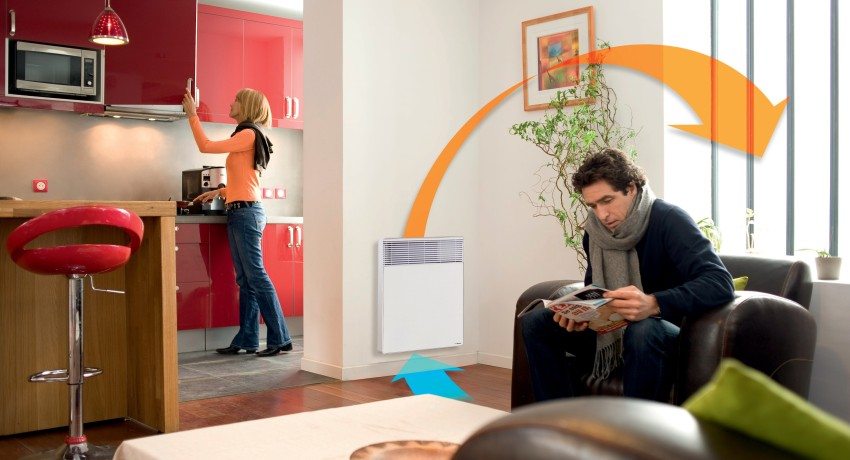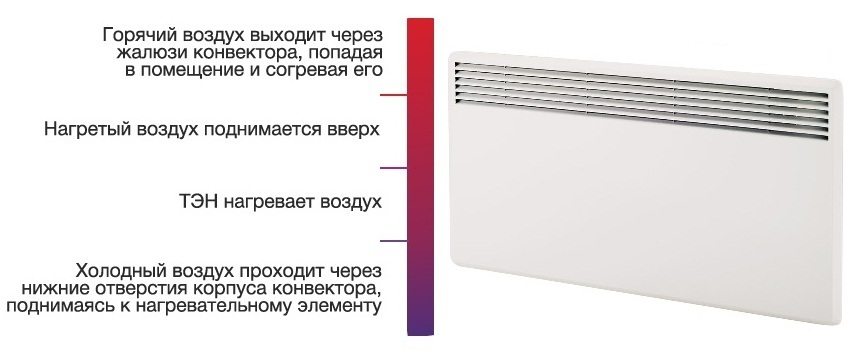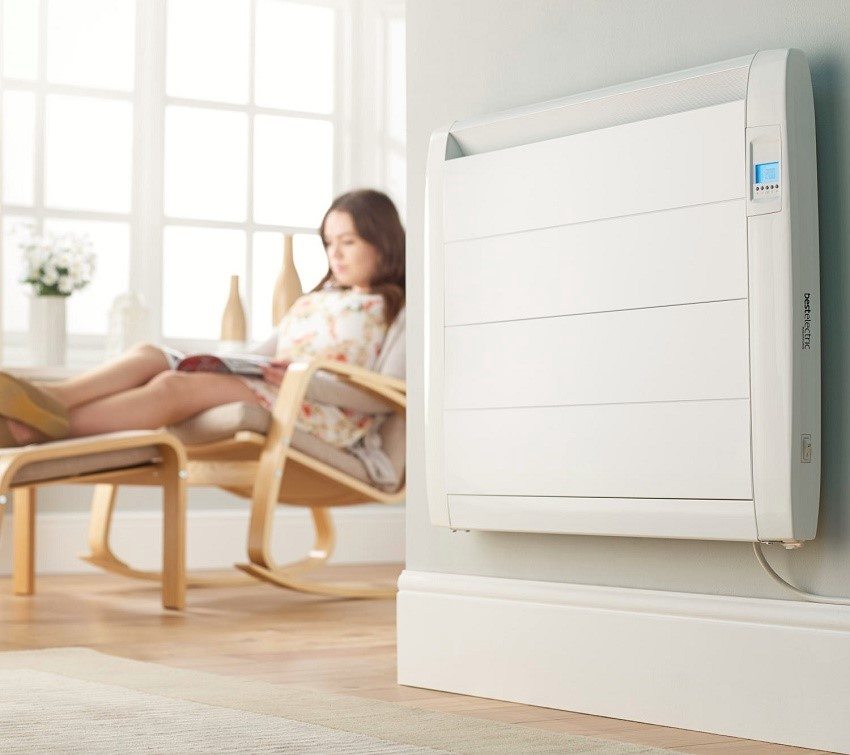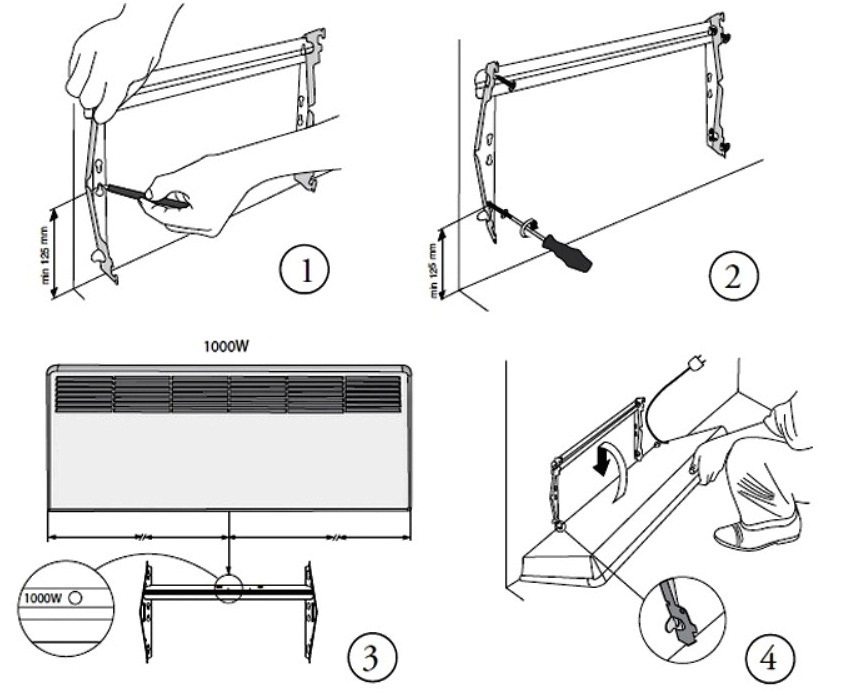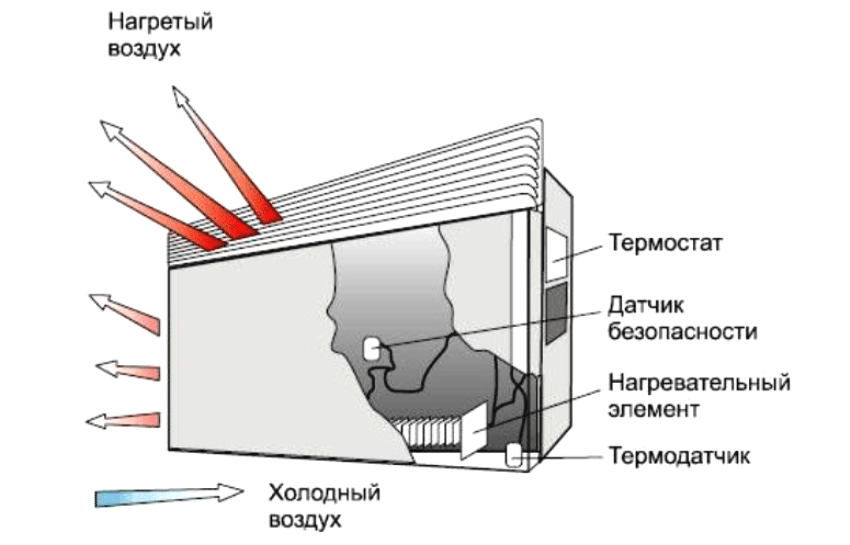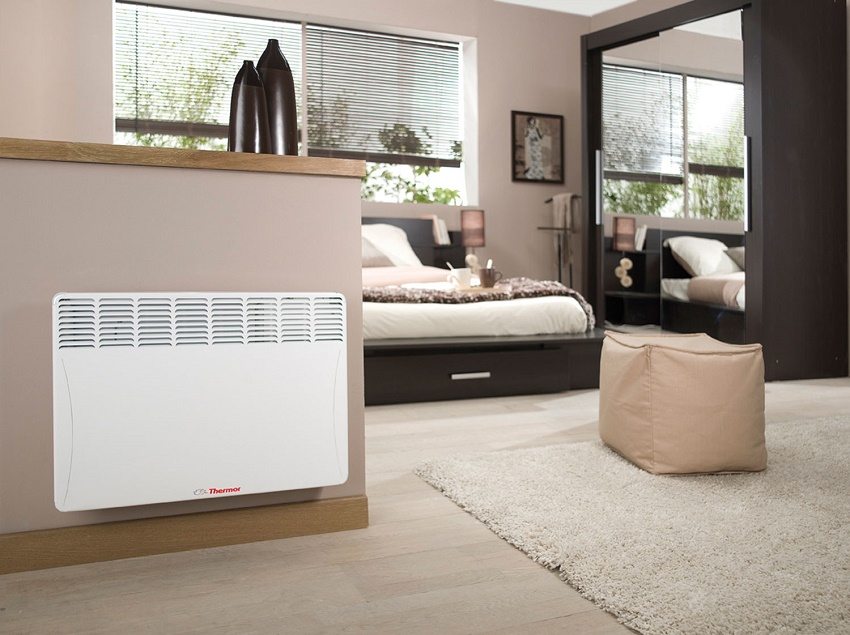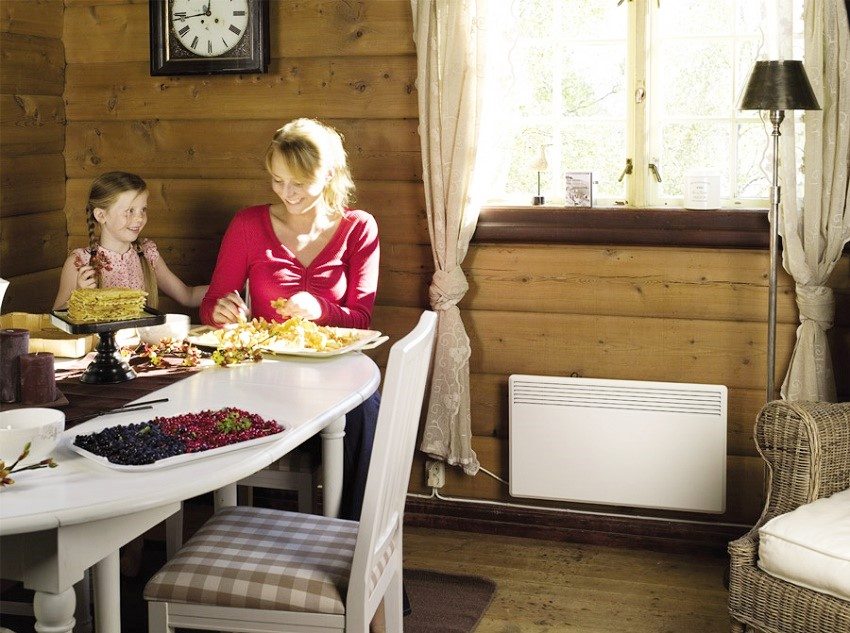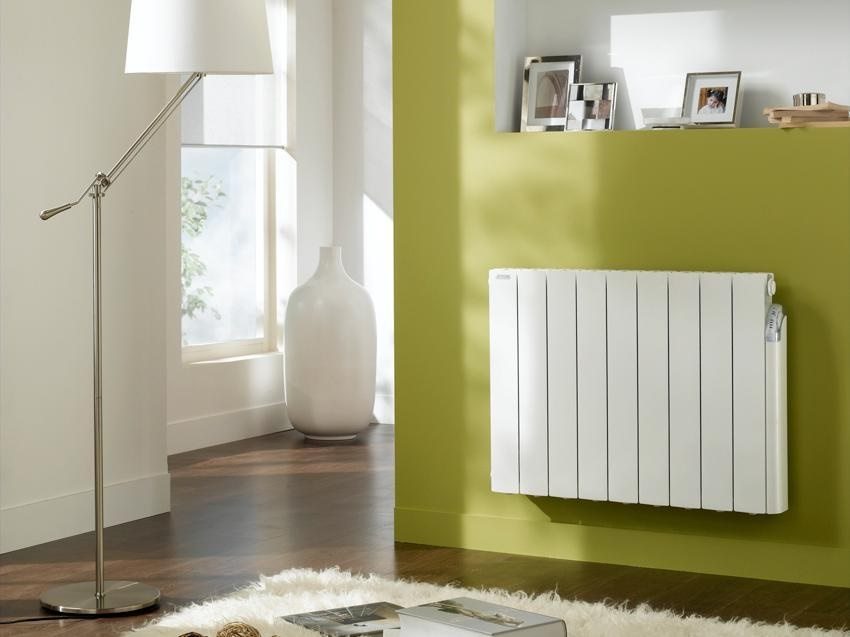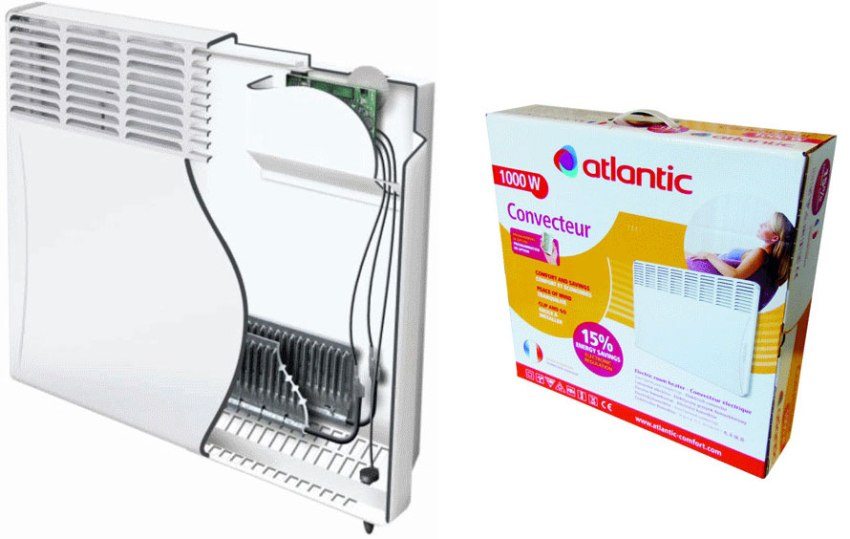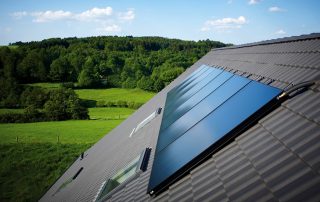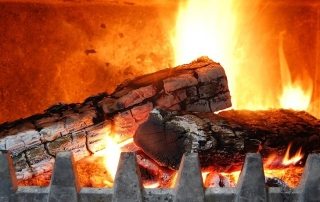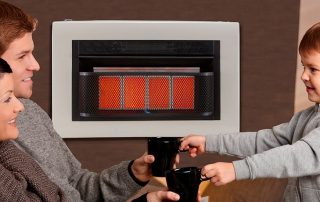The electric convector is an excellent alternative for creating a warm and comfortable atmosphere in the home. Buying a convector will be appropriate if you need to heat a private house, or your apartment has heating problems. There are a large number of varieties, manufacturers and models, but electric heating convectors with a wall thermostat are considered the best and most popular option. They have a ton of benefits, which we'll talk about below.
Content [Hide]
- 1 The difference between the convector and the radiator
- 2 Convector installation options
- 3 The device and principle of operation of the convector
- 4 Convectors advantages
- 5 Electric heating convectors with wall thermostat: what to look for when buying
- 6 Additional functions of convectors
- 7 Safety requirements when using the convector
- 8 Popular convector models
The difference between the convector and the radiator
Firstly, do not confuse the convector with a radiator. Inexperienced users often mistake terms and mistake one device for another. A radiator is a heating device that heats up the environment by heating itself. A wall-mounted heating convector with a thermostat passes air through itself, heats it up and thus heats the space.
The main advantage of a wall-mounted convector over a radiator is ease of installation and a small amount of space. The device is installed on the wall in any convenient place, so there is no danger of tripping over it, no need to lay cables and pipes, no need to supply the coolant.
Among other features of economical wall-mounted electric convectors for heating a summer house and an apartment, the following can be distinguished:
- The convector is very easy to assemble by hand. When it comes to wall installation, then you just need to drill a few holes in the wall, and the floor one, as the name suggests, is simply placed on the floor.
- The efficiency of the convector is close to 100%, that is, all the electricity is spent on heating the air.
- The equipment does not require maintenance, unlike many other heating systems.
- The convector is an environmentally friendly heating device. When a room is heated, no emissions into the atmosphere occur, there is no combustion of air.
- The average service life of the device is up to 20 years, which is a very respectable period.
- The heater works completely silently, as there is no circulation pump, fan or other elements that can generate noise.
- The price of an electric wall-mounted convector with a thermostat is not much higher than a radiator with a similar operating power, but it has much more advantages.
Useful advice!If you choose a convector for a home with a small child, please note that the wall model does not turn over, does not have sharp corners and does not heat up in the area of the body.
There is only one drawback of an electric convector - the high cost of electricity. Fortunately, many modern models have a so-called "economical" mode of operation, but it does not always help. Another small drawback is the uneven room temperature when using the convector. According to the laws of physics, warm air accumulates at the top, and cold air at the bottom, and with a high ceiling height, this can be a very significant nuance.
Convector installation options
According to the installation method, there are three main types of convector heaters:
- The floor convector is convenient in that it can always be installed closer to the power supply, and if desired, the floor unit can be easily transferred to another room or moved to another corner. The disadvantage stems from the dignity - it is easier to overturn such a convector or trip over it. This is especially inconvenient if you have small children or pets in your home.
- Wall-mounted version - mounted on the wall. The most popular mounting location is the wall under the window. Thus, the cold air from the window opening is immediately heated, preventing drafts. In addition, with such an arrangement of the convector, the window will not fog up due to the heat curtain.
- Convector built into the floor. The main advantage of this design option is its invisibility. It is installed under the floor covering and covered with a grill on top. Minus - you can install such a convector only during the repair of the floor, otherwise you will have to completely remove the cover.
Below we will consider the device, advantages and features of wall-mounted convectors, as they are the most popular.
The device and principle of operation of the convector
Wall-mounted electric heating convectors with a thermostat are always equipped with a metal casing, inside which there are heating elements. Their work is regulated thermostatwhich can be electronic or mechanical.
The heating element of the convector is a ceramic structure with a high-resistance conductor inside. It is sealed into a metal case and can have the following forms:
- radiator with heat dissipation plates;
- with wings;
- with inserts for better aerodynamics.
With this design and shape of the heating element, the convector can operate at temperatures from 600 to 1000 degrees Celsius. The advantage is that the air does not dry out, so there is no need to additionally purchase humidifier.
Related article:
What heating batteries are best for an apartment and a private house. Which radiators are best used in an apartment with central heating, and which ones in a private house. Characteristics, tips for choosing.
The convector's operation is trivial physics. Cold air descends, passes through the heating element, becomes warmer and lighter, rises up. When the warm air masses cool down, they descend again, and the process repeats.
Useful advice! Regardless of which is the best electric convector to purchase, it should always be installed as close to the floor as possible, but not end-to-end. Thus, the maximum volume of cold air will pass through the heater.
Convectors advantages
All types of convectors can boast the following advantages:
- there are no drafts during the operation of the device, and the heating rate of the room is very high;
- the convector turned on in automatic mode does not need to be looked after, all functions are regulated by the system;
- any type of unit has automatic overheating protection, so that the heating elements will definitely not fail due to high temperatures;
- the built-in thermostat automatically turns off the convector when the desired air temperature in the room is reached, this allows you to significantly save energy;
- high humidity is not a problem for most convectors, as they are protected from moisture;
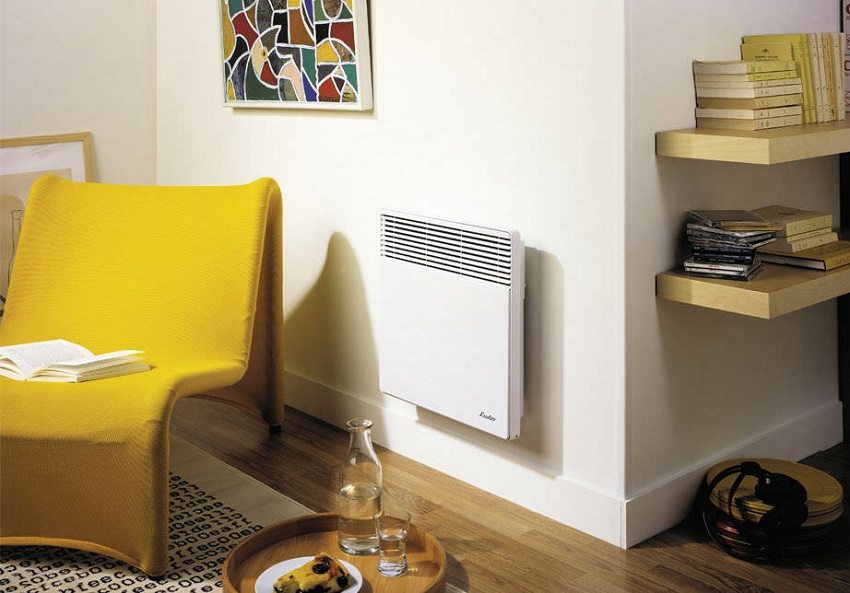
The correct choice of an electric convector will provide an atmosphere of warmth and comfort in the house.
- the device has an ergonomic and safe design, it has no sharp corners, it can be safely placed in a children's room;
- only the heating element heats up, but not the body, so it is impossible to burn yourself on the convector;
- when the heater is operating, there is no unpleasant odor, the air is not burned and does not dry out;
- ventilation occurs naturally, so the unit is completely silent.
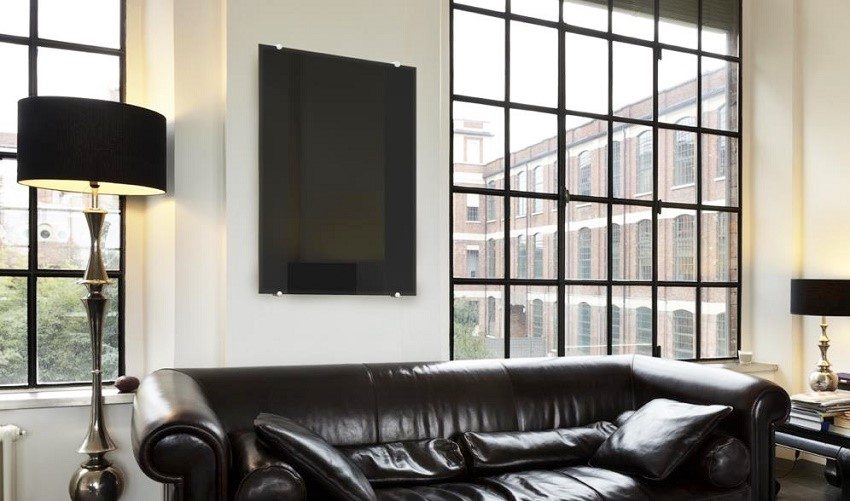
Ceramic panels combine infrared heater and convector
The question often arises: how to properly install an electric wall-mounted heating convector with a thermostat? Reviews indicate that the device is very easy to assemble with your own hands. As a rule, the kit contains all the necessary spare parts, that is, wall mounting brackets or removable casters for installing the convector on the floor.
Electric heating convectors with wall thermostat: what to look for when buying
It is quite simple to select the required power of the convector, for this you need to remember that to heat 20 square meters of a standard apartment or house, you will need about 2000 W of convector power.

The principle of operation of the electric heater: natural convection and radiant heat from the surface of the device
Useful advice! If the ceilings in the room are higher than two and a half meters, then the power must also be doubled.
Before buying, one of the most frequently asked questions is the type of thermostat. It can be mechanical or electronic. A unit with a mechanical thermostat will cost you less money, but it will have quite a few drawbacks. For example, a convector with a mechanical thermostat does not differ in accuracy when setting the temperature regime, and also cannot react as quickly to a drop in room temperature as an electronic one. This means that you should not always wait for a comfortable temperature.
If you are planning to buy a wall-mounted electric heating convector with an electronic type thermostat, keep in mind that it will cost about 30% more than a mechanical one. However, when the room gets cold, such a heater will instantly react and begin to heat the air. Its temperature setting accuracy is much higher. In addition, there are thermostats with programmable heating mode, where you can set the hourly temperature. This is very convenient if, for example, you go to bed and do not want to wake up in a cool room.
Additional functions of convectors
Modern electric convectors are not limited to simply heating the air. Many of them have additional features that make the atmosphere in the house even more comfortable:
- anti-freezing function - the convector switches on automatically if the air temperature in the room drops below 5 degrees Celsius;
- different modes of operation - many heaters work not only in the basic mode, but also with the settings "comfort", "economy", etc .;
- air ionization is a very useful function that can work even when the heating element is turned off;
- tipping sensor - automatically turns off the convector if it falls. A useful function if there are animals or small children in the house;
- automatic memorization of parameters - when turned off, the electronics remembers the set settings and returns to them after turning on;
- programmable heating element - with its help you can set such fine settings as hourly temperature change, temperature for the night or for the day, and even for a certain day of the week;
- universal control module - makes it possible to simultaneously configure several convectors located in different rooms from one control panel. A great option for a large house.
Safety requirements when using the convector
The convector is an electrical device, which means that its use implies the observance of certain safety measures. There are a number of recommendations that should be followed if you have a convector in your house:
- you cannot mount or place the heater directly near the outlet, the minimum allowable distance is 0.8 m. This is done in order to avoid the possibility of a short circuit;
- the convector must not be covered. It is not recommended to dry the laundry by throwing it on the device, this can lead not only to failure of the heating element, but also to a fire;
- if it is planned to install the unit in a room with a high level of humidity, then it must be adequately protected. The fact that the convector is protected from moisture is evidenced by the “IP 24” marking;
- compliance with these simple rules will not only ensure long-term and trouble-free operation of the equipment, but also your safety. After all, most fires happen precisely because of the violation of safety rules for the use of electrical appliances.
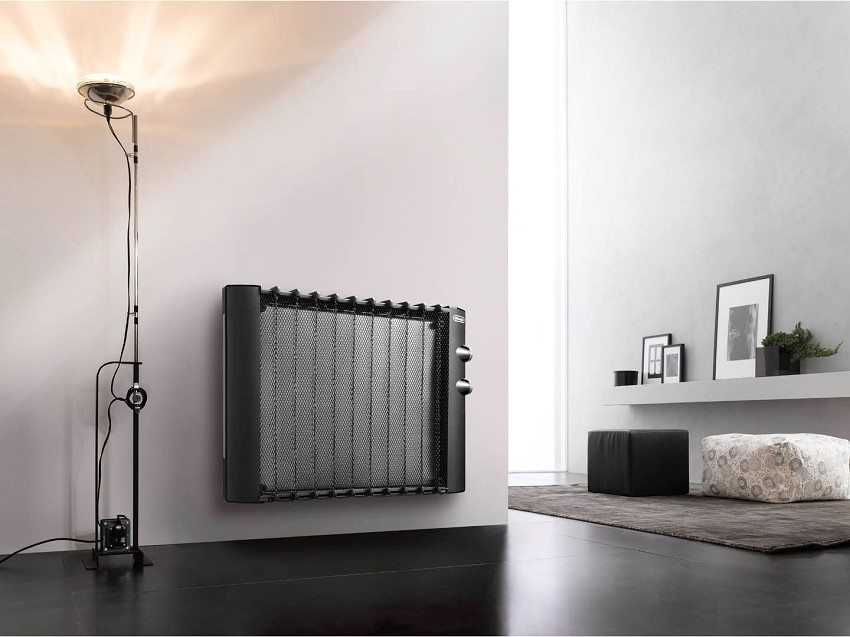
The convector will be an excellent solution for those who care about the quality of heating and the appearance of the unit.
Popular convector models
If you need reliable and high-quality electric heating convectors, customer reviews advise you to pay attention to Delongy's products. Their main advantage is an affordable price, but the quality is at a high level.
Another option for a simple and affordable convector is Noirot units. Many users describe them as the easiest to operate and most reliable.
Remember that wall-mounted electric heating convectors with a thermostat are a very sensitive technique that reacts poorly to violation of operating rules. If used correctly, the convector will provide a comfortable and cozy atmosphere in the house or apartment.
